Soil Investigation
Soil investigations are performed to obtain data on physical characteristics of soil/rock around a site to design earthworks & proposed structures
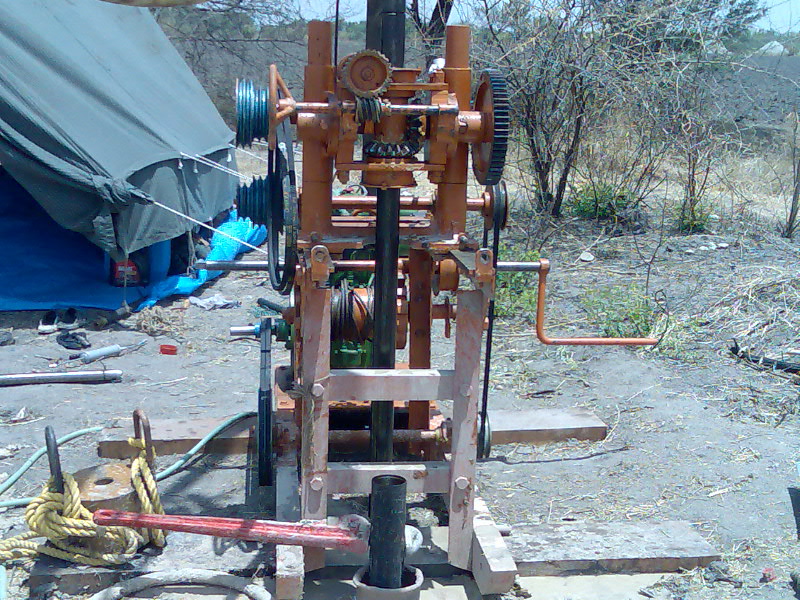
1. Drilling in Soil and Rock
Auger Drilling :
The Hand auger is suitable for unconsolidated formations like sand , Silt, and Clay
Rotary Drilling :
The bore holes were drilled by rotary drilling equipment. The diameter of the bore hole is 150 mm in overburden soils. In the rocky strata the diameter of the bore hole is NX/BX size. The following data was recorded during the drilling operations:
- Nature of strata
- Details of soil / rock cores
- Rate of drilling
- Colour of water
- Percentage of Core Recovery
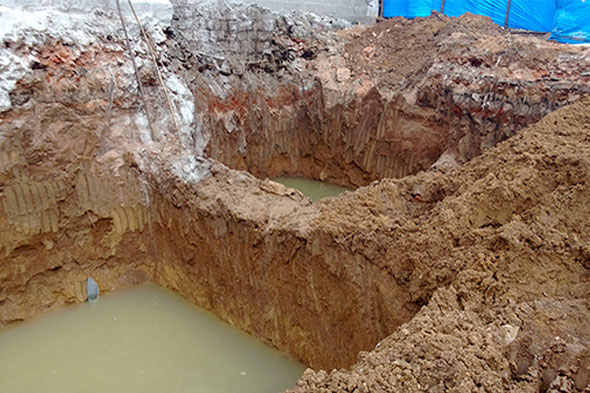
2. Excavation of Test Pits
Trial pit excavation is carried out for the purpose of visual inspection of soil condition. Trial pit will excavate at shown Location in site Plan . Prior to the excavation, site survey has been carried out to confirm the location for service , as per the built up area.
Purpose of Work :
- To explore the sub-surface conditions of the Proposed area and to provide general soil data relating to the Project.
- To determine the existence of any dumping/filling material.
- To observe the water table level.
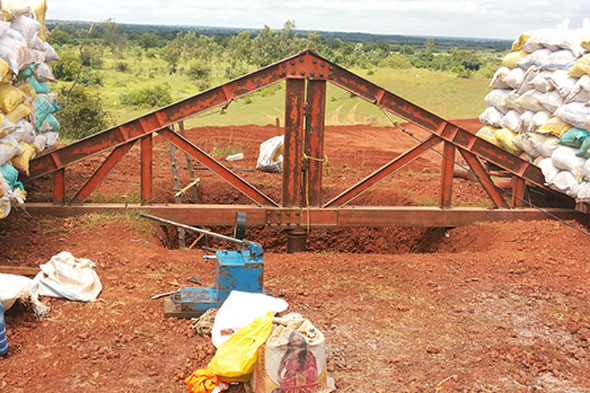
3. Plate Load Test
The load test shall be conducted by applying a vertical load on the test footing or plate. The test shell be carried out in relevance with IS Code 1888-1982. Its transfer the load by reaction anchor attached to a designed truss frame/loading platform. Corresponding settlement are recorded.

4. In-Situ Penetration Test
In-situ penetration tests have been widely used in geotechnical and foundation engineering for site investigation in support of analysis and design. The standard penetration test (SPT) and the cone penetration test (CPT) are two typical in-situ penetration tests. The dynamic cone penetration test shows features of both the CPT and the SPT. The DCPT is similar to the SPT in test. It is performed by dropping a hammer from a certain fall height and measuring a penetration depth per blow for each tested depth.
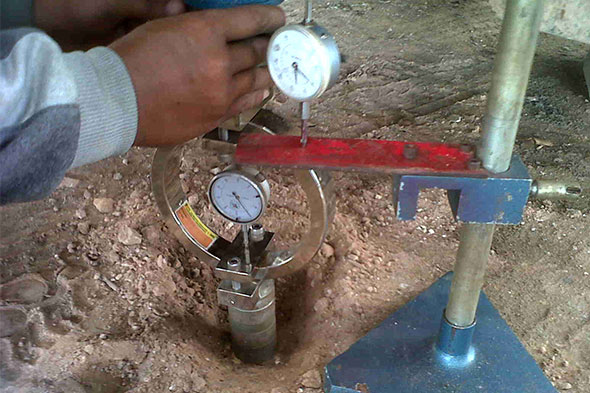
5. Field CBR Test
The California bearing ration (CBR) is a penetration test for evolution of the mechanical strength of road sub grades. The test is performed by measuring the pressure required to penetrate a soil sample with a plunger of standard area. The measured pressure is then divided by the pressure required to achieve on equal penetration on a standard crushed rock material.
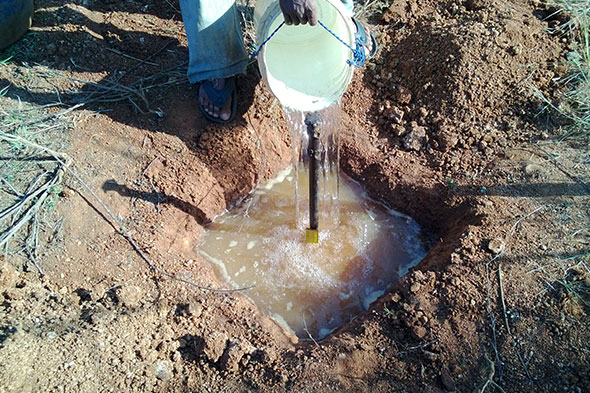
6. Percolation Test
A percolation test is a test to determine the adsorption rate of soil for a septic drain or leach field. The result of a percolation test is required to properly design a septic system. Percolation testing is simply observing how quickly a known volume of water dissipates in to the sub-soil of a drilled hole of known surface area.
A percolation test consist of digging one or more hole in the soil of the proposed leach field to a specified depth, presoaking the hole by maintain a high water level in the hole, then running the test by filling the hole to a specific level and timing the drop of the water level as the water percolates in to the surrounding soil.
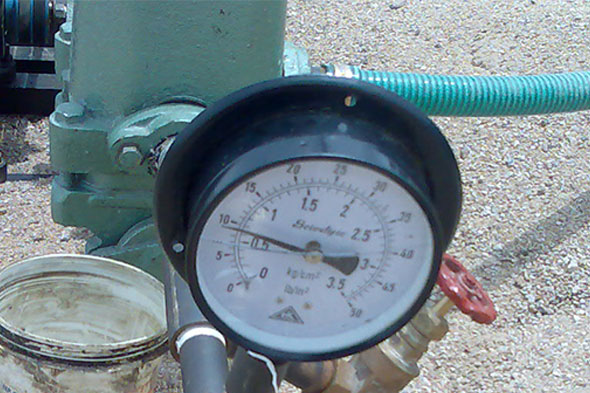
7. In Situ Permeability Test
In rocky strata, Packer tests is conducted in accordance with IS : 5529 Part 2 (1985). The hole is drilled to the desired depth, and cleaned. Two packers connected to the ends of a perforated drill rod of length equivalent to the test section are fixed in the bore hole.
Water is then pumped under increasing pressures of 0.1, 0.2 and 0.3 kg/sq cm. and then decreasing pressure. Each pressure is maintained until the readings of the water intake at 5 m intervals show constant values. Lugeon values are computed for each test section. They are interpreted as per Table 1 of IS : 5529.
